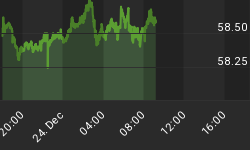Last week we warned about the negative implications of the Russell 2000 negative momentum divergence for the other major indices. After struggling at the beginning of the week, the markets finally succumbed to selling pressure on Thursday and Friday. For the IWM, that manifested itself in a break below first resistance at 112 with 107 being the next target:

Since Argentina's default on its bond obligations and the collapse of Banco Espirito Santo are credited as being the actual triggers for the global market meltdown which started on July 31st, it is worth taking a trip down memory lane and looking at two historical charts coinciding with two previous international financial crisis events which occurred during this time of year. This takes us back to the Asian financial crisis which started in July of '97, and the Russian (or Ruble) financial crisis which was triggered in August '98.
As the weekly charts below show, the '97 crisis lead to a 13 week long 16%decline in the DJIA, which was over by November of that year:

while the '98 crisis was accompanied by a 12 week long 20% drop, which endedin October '98:

Charts courtesy of OT Signals
Therefore, if history is any indication, investors shouldn't rush to buy the dip this time. A decline of similar proportion should lead to a retest of the '07 DJIA highs at around 14,000. The tapering of QE and widespread geopoliticaland financial trouble may add even more fuel to the fire.















